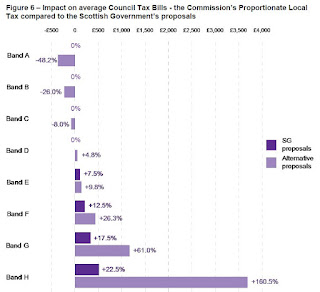
More than 40,000 people under the age of 65 have been diagnosed with dementia in the UK, 3,200 of those in Scotland. It is estimated that 18% of them continue to work after a diagnosis and therefore this is a growing workplace issue that employers and unions should be addressing.
Today, I was speaking at a seminar organised by the STUC, Age Scotland and Alzheimer’s Scotland, aimed at raising the profile of the issue and building alliances to improve awareness and action.
The number of people with dementia is forecast to increase to over 1 million by 2025 and 2 million by 2051. Not least because of the increase in the retirement age and poor UK state and occupational pension provision - a greater number of people are expected to work later in life.
As the lead negotiator for the largest pension scheme in Scotland, the most common question members asked me was, ‘how I can retire early?’ Now, they are just as likely to ask about working on past the normal retirement age.
This driven by many factors in addition to increasing the normal retirement age. In local government many members have short service – the average is ten years. Contrary to the media myth of the 'gold plated pension' the average pension in payment is only £3705 per year. Many women in particular need to work on to build up a decent pension after career breaks and a number of men come into the public service workforce later in their career. We also have an ageing public service workforce with 50 to 59 year olds the biggest growing proportion.
To help us address this issue, we have a very useful guide from the Alzheimer's Society, which UNISON contributed to. This guide sets out practical advice about how to spot the signs and symptoms of the illness. It also explains how to support people with dementia - giving them choice and control of their lives, and allowing them to continue to contribute their skills and experience to the organisation.
This can not only make a difference to affected staff, but bring benefits to the whole organisation. The business case includes improving staff retention and providing a more inclusive service - which itself, evidence suggests, can enhance productivity and performance.
A dementia diagnosis doesn’t necessarily mean a person can no longer do their job. However, dementia is a progressive condition and over time it will increasingly impair a person’s ability to work. By becoming dementia friendly, organisations will further develop a culture that understands and supports all staff and enables them to work in a way that suits them and meets the organisation’s needs.
Union reps should use the guide to make themselves aware of the symptoms of dementia. Only 48% of people with dementia in the UK are diagnosed and people with early onset dementia can face particular delays receiving a diagnosis. There is a perception that only retired older persons suffer from dementia, so this might not be the first thing a steward thinks of when representing a member.
There's also the question of legal compliance. People with a disability are protected under the Equality Act 2010, and generally this will include people living with dementia. This means that employers have a duty to make reasonable adjustments for staff with dementia so that they are not disadvantaged at work. Adjustments could include clear signage and labelling, creating quiet spaces, and installing soundproofing or putting up visual barriers to minimise distractions. They might also entail a review of current job specification, reallocation of duties, a change of working hours, or redeployment to another role.
An older workforce will bring a number of challenges and opportunities and dementia is one of those. Unions and employers need to address these issues urgently. Organisational culture takes a long time to shift, so raising awareness and then training for managers and union reps should be an early priority.







